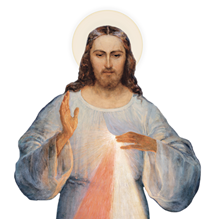
By Msgr. Stephen M. DiGiovanni, HED
Saint Agnes, whose feast day we celebrate on Jan. 21, was just 13 years old when she was martyred. Yet her brief life, heroic virtue, and death captured the imagination of her contemporaries and the Church in Rome. In fact, many of the Church Fathers wrote about St. Agnes. One of the most memorable pieces is by St. Ambrose in his fourth-century work, On Virginity:
Was her little body really large enough to receive the sword’s thrust? She was hardly big enough to be struck, yet was great enough to overcome — and that at an age when little girls cannot bear a mother’s stern look and think a needle’s jab a mortal wound!
Agnes did not tremble when in the executioner’s bloody hand nor cringe at the harsh sound of chains. She did not know yet how to die, but she was ready. Dragged to the pagan altar, she extended her hands to Christ in the flames and turned the sacrilegious fire into a victor’s banner. She offered her neck and hands to the fetters, but the chains were too big for such tiny limbs.
Was this some new kind of martyr? She was too young for torture yet mature enough for victory, hard to fight against yet easily winning the prize. She hurried to the place of torment as though it were a bridal chamber. She hastened as a virgin adorned for Christ, crowned with virtues, not flowers (De Virginibus, I).
Agnes was martyred during the imperial persecution of Diocletian in 304 A.D. Born of a wealthy family, she vowed herself to Christ at an early age. Even when urged to marriage by her family and ultimately denounced to the imperial authorities because of her Catholic faith, she met their threats with courage and determination. Reportedly, her response to her judge’s cajoling to denounce her God, and threats of physical torment at the sight of the instruments of torture was, “I can have no other spouse than Christ.” And she was just 13!
There are many early virgin martyrs in the Church’s catalogue of saints; many have stories similar to that of St. Agnes. To the cynic, it’s all one legend applied to many fictitious young women. The Church just makes all this stuff up!
No, that’s not what the Church does. The reality is that, since many of the virgin martyrs of the early Church were from wealthy families, the stories are similar because of one motivation by the state for persecuting these girls, and one common motive shared by these young virgins. For the empire, it was about money. If these Christians were convicted and executed, the fortunes and properties of these girls and their families would have been confiscated by the Imperial treasury. While the persecuting officials may have sent these girls to their death because of greed, these virgin martyrs underwent torment and death for another reason entirely: Their motivation was their love for Christ and their determination never to be unfaithful to Him through sin.
Blessing of the lambs
Saint Agnes’ feast day is linked closely with recalling the virtue, Catholic faith, and courage of this young virgin martyr. The name “Agnes” comes from the Latin word “agnus,” which means “lamb,” a traditional symbol of purity and innocence. Consequently, blessing lambs is a tradition on her feast day. Since the fourth century, two lambs were blessed by an archbishop specially delegated by the pope himself at the basilica built above St. Agnes’ tomb in Rome. The lambs were then carried off — when I last attended the ceremony in January 1983, the fleecy lambs were whisked away in a Mercedes limousine — to the convent of St. Cecilia, where they were cared for until Easter. Their white wool is used to weave the white pallium, an ancient sign of apostolic authority given by the Pope to newly named metropolitan archbishops on the Solemnity of Sts. Peter and Paul on June 29.
Before the pallia are imposed by the pope, they are placed in a bronze case inside the ancient Tomb of St. Peter, directly beneath the High Altar of St. Peter’s Basilica in the Vatican, known as the Niche of the Pallium.
These actions are symbolic of an essential link between personal purity and virtue, and apostolic authority. The pallium is a symbol of the wearer’s union with the Apostolic See, an outward sign that the archbishop shares the same Catholic faith with the Successor of St. Peter. But it is also a sign and reminder that the archbishop’s personal life must be one of exemplary virtue.
Virtue and purity
Saint Agnes’ virtue and purity of faith strengthened her. She preferred to face threats, torture, public ridicule, and martyrdom rather than betray her Catholic faith or her love for our Lord. Those who share in the authority of the Church through Apostolic Succession — that self-same authority Christ gave to His Apostles, and which the Apostles passed on to their successors the bishops, down to the present generation of Catholic bishops —need to live lives worthy of their calling, holding a common Catholic faith through union with the Successor of St. Peter and being living examples of virtue and purity in their daily lives.
Likewise, as shepherds imitating the Good Shepherd, Christ the Lord, those sharing the authority of the Apostles cannot be “fleecing the flock,” as the saying goes. The pallium is a reminder that they are to willingly sacrifice themselves for the well-being of their spiritual sheep, and not “shear” them for their own personal gain. The shepherd must imitate Christ The Good Shepherd by laying down his life for his friends — the sheep.
We should pray for the faith, love of God, virtue, and perseverance of St. Agnes for ourselves and for our priests and bishops, that all might find salvation in Christ through His Catholic Church. Let us ask St. Agnes’ help so that we may lead many to Him by our fidelity and virtue.
Saint Agnes, pray for us!
{shopmercy-ad}

















